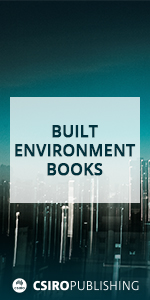
Historical Records of Australian Science
Volume 32 Number 2 2021

Billy Griffiths’ award-winning book Deep Time Dreaming: Uncovering Ancient Australia (2018) brought the history of Australian archaeology to the attention of a broad audience. This article surveys what has been written on the history of Australian archaeology to date, the different approaches used, and some possibilities for further research. It shows that Deep Time Dreaming, while undoubtedly significant, cannot be considered the final word on the history of Australian archaeology—there is still more to be written.

Today proton accelerators (synchrotrons) play a pivotal role in nuclear physics research and in the treatment of cancer. In 1946, an Adelaide born and educated nuclear physicist, John Gooden, joined Professor Mark Oliphant at the University of Birmingham to build a synchrotron. Described by Oliphant as his most brilliant student, Gooden was responsible for the mathematical theory, design and construction in what was the world’s first project to build a proton synchrotron. Tragically, Gooden died in 1950 before its completion, while he and Oliphant were developing another proton accelerator in Australia.

The Paradise Parrot is the only mainland Australian bird species known to have become extinct since colonisation, but unlike the Thylacine, the story of its loss has not captured the popular imagination. Yet its story is a fascinating one, moving from discovery to loss to rediscovery to ultimate extinction. This article explores why, after the parrot was rediscovered in 1921, efforts to preserve it were so feeble and ineffectual that the species soon succumbed. It is a compelling tale in a time of urgent concern about extinctions.
HR20019 Abstract | HR20019 Full Text | HR20019PDF (1 MB) Open Access Article

The ethnographic recordings of Robert Hamilton Mathews have gained increasing respect over recent decades, and it has been assumed that their quality was connected to his early career as a property surveyor. Research into this career, however, reveals a man maximising his income using illegal and unethical methods so that it becomes necessary to reconsider the influence of Mathews’ survey work on his ethnography.

Sally Smith (1941–2019) was a world leader in the study of arbuscular mycorrhizal symbioses between plants and soil fungi that allow a wide range of plants to grow in soils low in nutrients, especially phosphate. Her work has been very relevant to both plant ecology and agricultural productivity. She rapidly developed a large and active group that researched at scales ranging from advanced microscopy through molecular biology and physiology to plant ecology.

Jim Lance was a clinical neurologist who created the first university-based department of neurology in Australia. He championed academic enquiry and the scientific basis of practice, with a particular focus on two major themes: the control of muscle tone, reflexes and movement and the pathophysiology of movement disorders, and the mechanisms and management of headache, in particular migraine.




